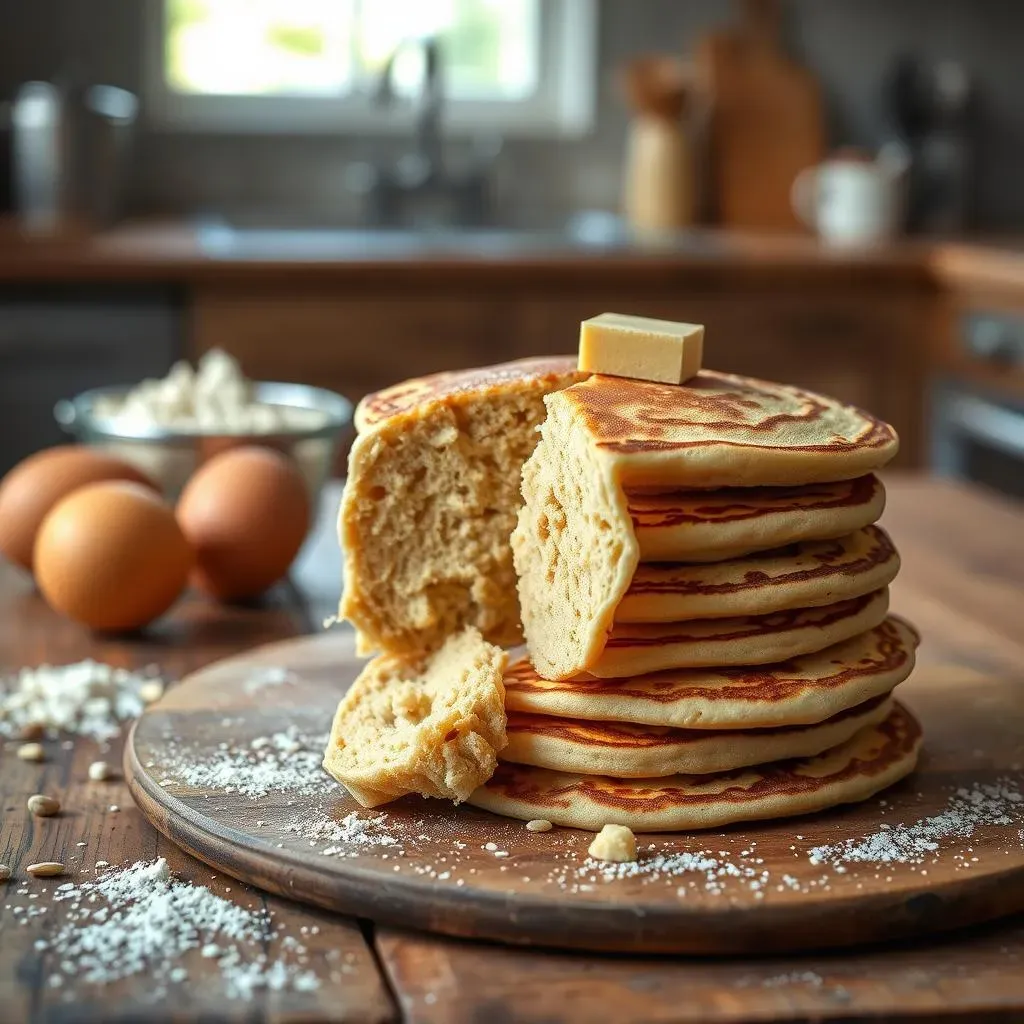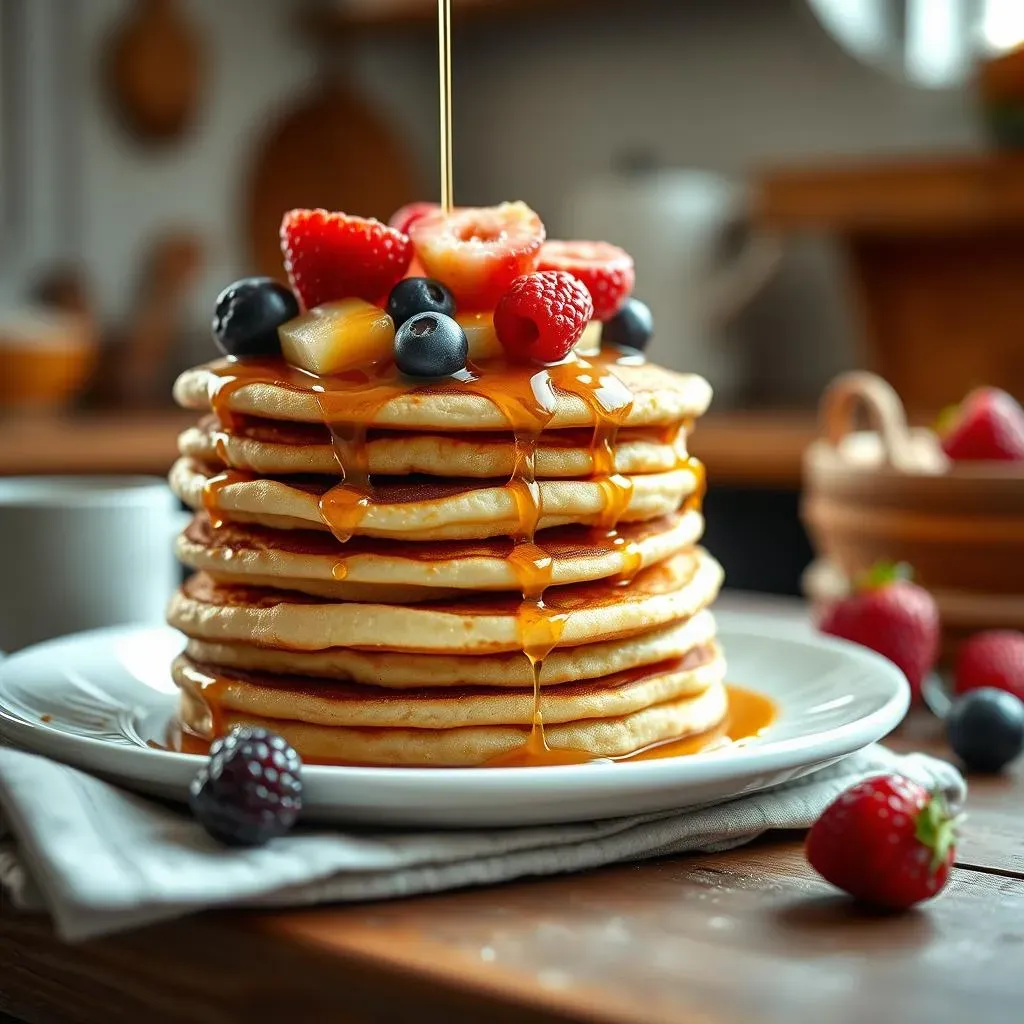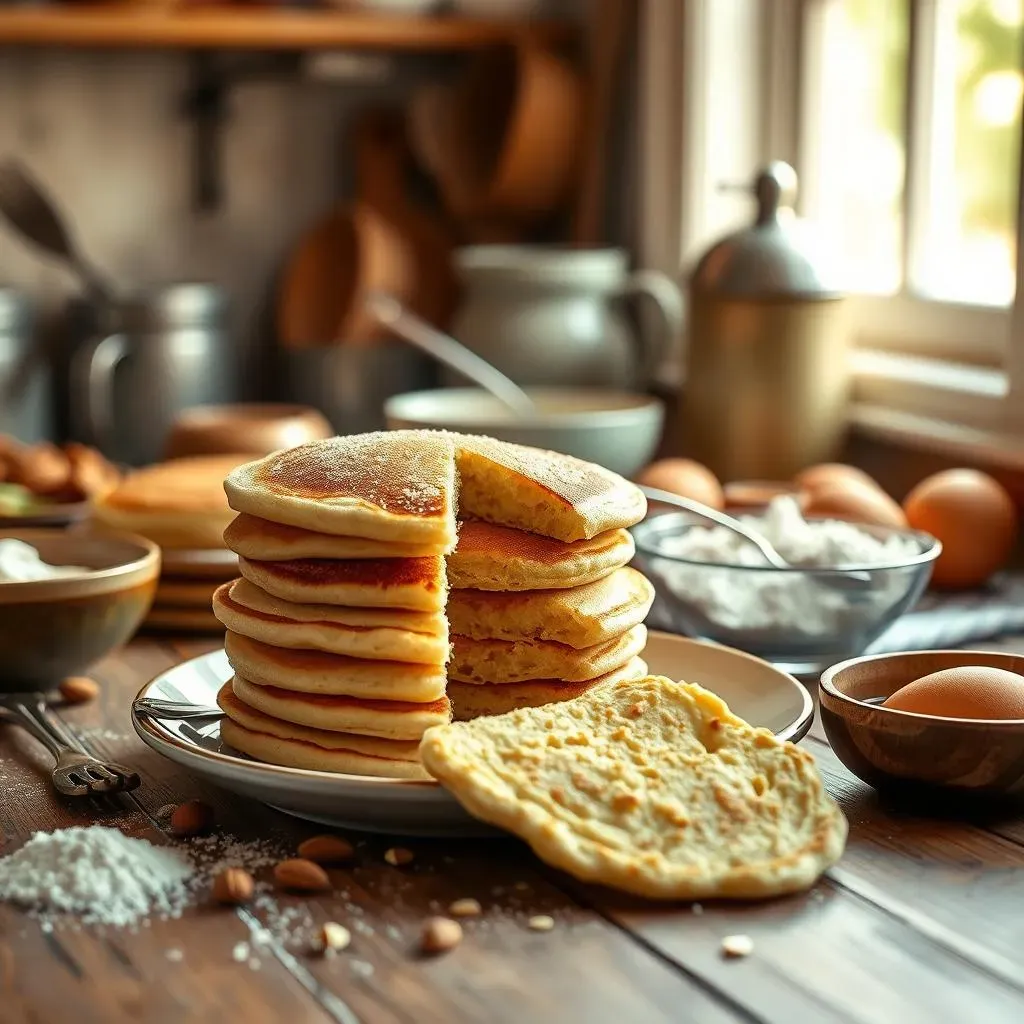Table of Contents
Ever dreamed of fluffy, golden-brown pancakes, only to end up with a crumbly mess that resembles more of a sad pile of disappointment? If you've ventured into the world of gluten-free baking, you know the struggle is real. Making gluten-free pancakes can feel like navigating a minefield, with each flip a potential disaster waiting to happen. The usual culprits? Pancakes that fall apart, refuse to hold their shape, or taste more like cardboard than a breakfast treat. But fear not, fellow pancake enthusiasts! This article is your guide to gluten-free pancake recipe troubleshooting. We're diving deep into the common issues that plague gluten-free pancake attempts and offering simple, practical solutions. From flour choices to binding agents, we'll cover it all. We'll explore why your pancakes might be crumbling, how to adjust your batter, and what secret ingredients can save the day. We'll also look at real-life examples of how others have conquered the gluten-free pancake challenge. So, if you're tired of pancake fails and ready to master the art of gluten-free breakfast, you're in the right place. Let's get cooking!
Why Your GlutenFree Pancakes Are Falling Apart
Why Your GlutenFree Pancakes Are Falling Apart
Okay, so you're making gluten-free pancakes and they're turning into a crumbly mess, right? It's like they have a secret mission to fall apart the second they hit the pan. It's not just you, it's a common struggle in the gluten-free world. You see, regular wheat flour has this magical protein called gluten, which acts like a super-strong glue, holding everything together. When you take that out of the equation, you're left with a batter that's essentially a bunch of ingredients trying to figure out how to cooperate. That's why we need to find other ways to give our pancakes some structure and prevent them from collapsing into a sad, pancake-y pile. It's all about understanding the science of gluten-free baking and knowing what ingredients can act as good replacements.
The absence of gluten means we need to think differently about how our ingredients interact. It's like building a house without cement; you need to find other ways to make sure the bricks stay put. This often means using a combination of different gluten-free flours, binding agents, and the right amount of liquid to get that perfect pancake consistency. It can be a bit of trial and error, but once you understand the basic principles, you'll be on your way to making pancakes that are not only delicious but also structurally sound. If you're looking for a good starting point, try this best gluten-free recipe.
Think of it like this:
- Gluten: The superhero glue in regular flour.
- Gluten-Free Flours: Each has its own personality and binding power.
- Binding Agents: Our gluten-free heroes, like flaxseed, eggs, and psyllium husk.
- Liquids: The right amount can make or break your batter.
It's all a delicate balance, but don't worry, we're about to break down exactly how to fix those falling-apart pancakes!
Next up, we'll be tackling the usual suspects that cause pancake disasters, and how to solve them.
Common Culprits and Easy Fixes
Common Culprits and Easy Fixes
Alright, let's get down to the nitty-gritty. What exactly is causing your gluten-free pancakes to stage a dramatic breakup on the griddle? It's usually a mix of a few common issues. First up, the flour. Are you using a super-fine almond flour, or something that feels a bit like beach sand? The coarser the flour, the less likely it is to hold together. It's like trying to build a sandcastle with rocks – not gonna work. And what about the liquids? Coconut milk, while delicious, can be a bit too watery for pancakes. It's like trying to make a cake with soup – you need the right balance. Then there's the egg situation. Eggs are like the glue of the baking world, and sometimes you just need more of that glue to make things stick. It's all about finding that sweet spot, where everything works together instead of against each other. If you're looking for a recipe with a good base to start from, check out this gluten-free pancake using oat flour.
Now, here's the fun part: fixing these little pancake problems. If your flour is too coarse, try swapping it for a finer version. If coconut milk is your downfall, try cutting back or even leaving it out completely. It's like a science experiment, but with breakfast. And don't be shy with the eggs; sometimes, an extra egg is just what your batter needs. It's like adding extra support to a wobbly structure. Also, think about adding some binding agents. Things like flax gel or psyllium husk powder can be game-changers, acting like the gluten your batter is missing. It's like adding a secret ingredient that makes everything work. And remember, sometimes, smaller is better. Mini-pancakes are easier to handle, and they're just plain cute. If you are looking for a quick recipe, check out this gluten-free pancake for a quick breakfast.
Problem | Solution |
|---|---|
Coarse Flour | Use finer almond flour |
Too much coconut milk | Reduce or omit |
Not enough eggs | Add an extra egg |
Lack of binding | Add flax or psyllium |
Here's a quick recap of the usual suspects:
- Flour Fumbles: Coarse almond flour.
- Liquid Lunacy: Too much coconut milk.
- Egg Enigma: Not enough eggs.
- Binding Blues: Lack of binding agents.
- Size Matters: Large pancakes are harder to flip.
- Flour Variety: Not using the best type of flour.
- Temperature Tiffs: Too hot of a pan.
You see, these are some of the usual problems that cause your pancakes to fall apart.
By tackling these issues, you will be on your way to making the perfect gluten-free pancake.
Putting It All Together: Success Stories and Final Tips
Putting It All Together: Success Stories and Final Tips
So, you've battled the batter, faced the flippin' failures, and now you're wondering if there's a light at the end of the gluten-free pancake tunnel? Well, let me tell you, there absolutely is! It's time to talk success stories and final tips that can turn your pancake woes into pancake wins. One of our readers, let's call them Ghosty, was right there with you, struggling with crumbly pancakes that seemed to have a vendetta against staying in one piece. What did Ghosty do? They experimented! They found that a 1:4 ratio of almond flour to eggs was their magic formula. They also ditched the berries and coconut milk, keeping things simple. It's a great reminder that sometimes, less is more, and that everyone's perfect pancake recipe is a little different. You might want to try gluten-free pancakes without xanthan gum to see if that works for you.
But it's not just about one magic recipe, it's about understanding the process. Gluten-free baking is like a science experiment where you're the head scientist, tweaking and adjusting until you get the desired result. What works for your neighbor might not work for you, and that's okay! It's about finding what your taste buds and your batter prefer. So, don't be afraid to try new things, add a little more of this, take away a little bit of that. The key is to be patient and persistent. And while you are experimenting, why not try this gluten-free pancake with banana. It's a great way to add natural sweetness and moisture to your pancakes.
Here are some final tips to keep in mind:
- Experiment: Don't be afraid to try different flours and binding agents.
- Patience: Gluten-free baking can take some time to master.
- Adjust: Tweak recipes to suit your taste and needs.
- Share: If you find a great recipe, share it with others!
And remember, everyone's gluten sensitivity is different. What works for one person might not work for another, so it's important to listen to your body and adjust as needed. If you are someone with celiac disease check this gluten-free pancake recipe for celiacs.
So, go forth and conquer those gluten-free pancakes! You've got this!
Wrapping Up Your Gluten-Free Pancake Journey
Making perfect gluten-free pancakes might seem like a daunting task, but it's totally achievable with a bit of know-how and some experimentation. We’ve covered a lot, from understanding why your pancakes crumble to tweaking your batter with flax, psyllium, or even just an extra egg. Remember Ghosty's success story? They nailed it by keeping things simple and adjusting the flour-to-egg ratio. The key takeaway here is that there's no one-size-fits-all solution. Your ideal gluten-free pancake recipe is out there; it just takes some patience and willingness to experiment. Don't be afraid to try different flours, binders, and liquid ratios until you find the perfect combination for your taste and needs. So, go ahead, grab your mixing bowl, and start flipping. With these tips and a little practice, you’ll be enjoying delicious, structurally sound gluten-free pancakes in no time!
